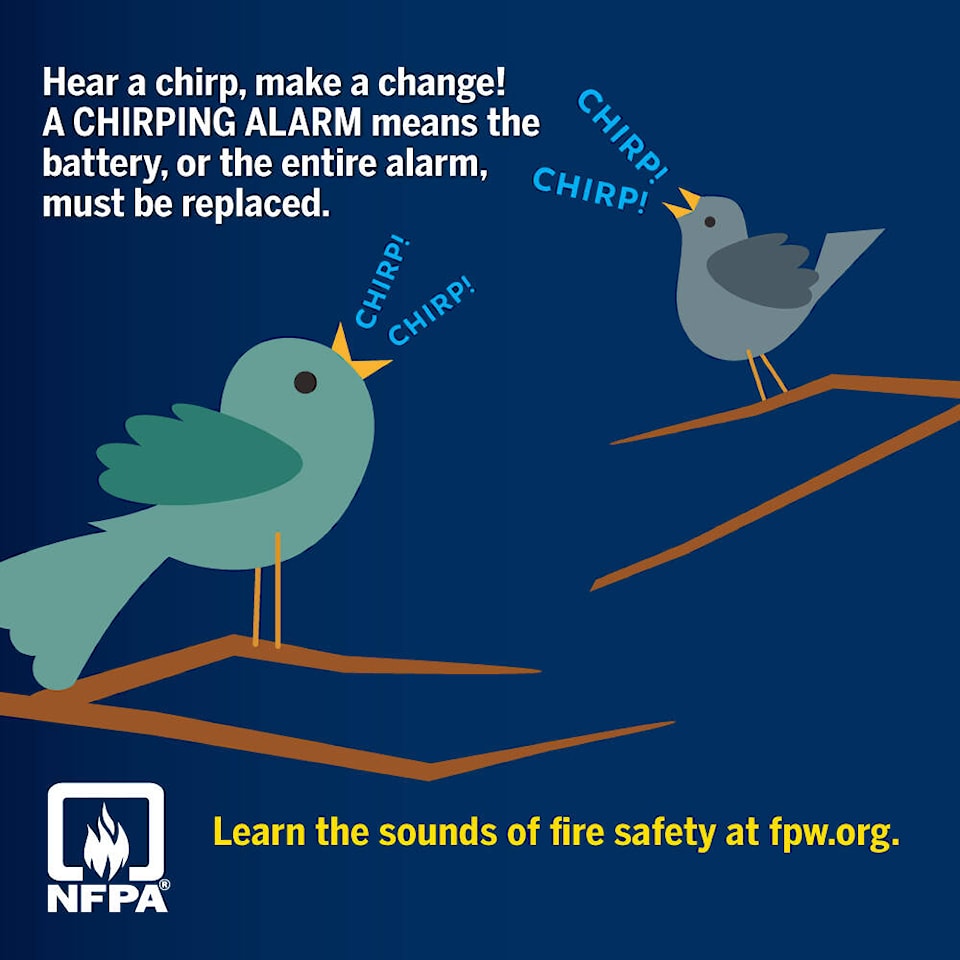This year’s Fire Prevention Week campaign, “Learn the Sounds of Fire Safety!” works to educate everyone about the different sounds the smoke and carbon monoxide alarms make. Knowing what to do when an alarm sounds will keep you and your family safe. When an alarm makes noises – a beeping sound or a chirping sound – you must take action.
Is there a beep or a chirp coming out of your smoke or carbon monoxide alarm? What does it all mean?
Knowing the difference can save you, your home, and your family. Make sure everyone in the home understands the sounds of the smoke and carbon monoxide alarms and knows how to respond.
Learn the sounds of your smoke and carbon monoxide alarms by checking the user guide or search the brand and model online.
What is your alarm telling you?
Smoke alarms
- A continued set of three loud beeps—beep, beep, beep—means smoke or fire. Get out, call 9-1-1, and stay out.
- A single “chirp” every 30 or 60 seconds means the battery is low and must be changed.
- All smoke alarms must be replaced after 10 years.
- Chirping that continues after the battery has been replaced means the alarm is at the end of its life and the unit must be replaced.
Carbon Monoxide (CO) alarms
- A continuous set of four loud beeps —beep, beep, beep, beep — means carbon monoxide is present in your home. Go outside, call 9-1-1 and stay out.
- A single chirp every 30 or 60 seconds means the battery is low and must be replaced.
- CO alarms also have “end of life” sounds that vary by manufacturer. This means it’s time to get a new CO alarm.
- Chirping that continues after the battery has been replaced means the alarm is at the end of its life andthe unit must be replaced.
- Make sure your smoke and CO alarms meet the needs of everyone in your home, including those with sensoryor physical disabilities.
Some tips:
- Install a bedside alert device that responds to the sound of the smoke
and CO alarms. Use of a low frequency alarm can also wake a sleeping person with mild to severe hearing loss.
- Sleep with your mobility device, glasses, and phone close to your bed.
- Keep pathways like hallways lit with night lights and free from clutter to make sure everyone can get out safely.
